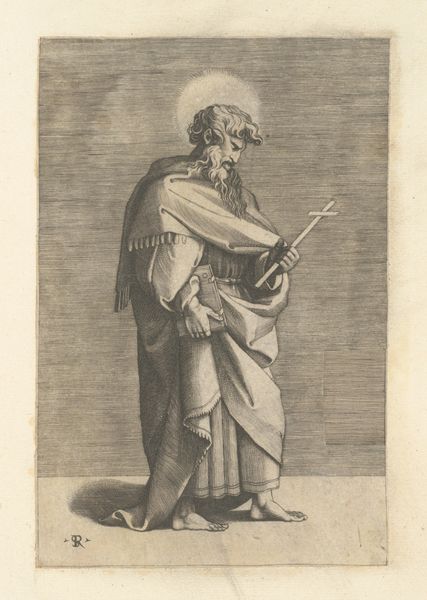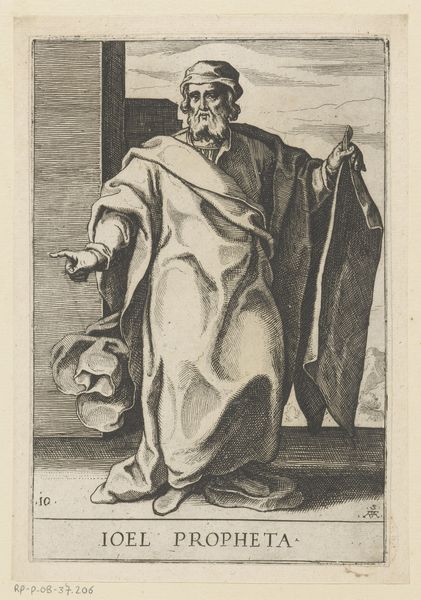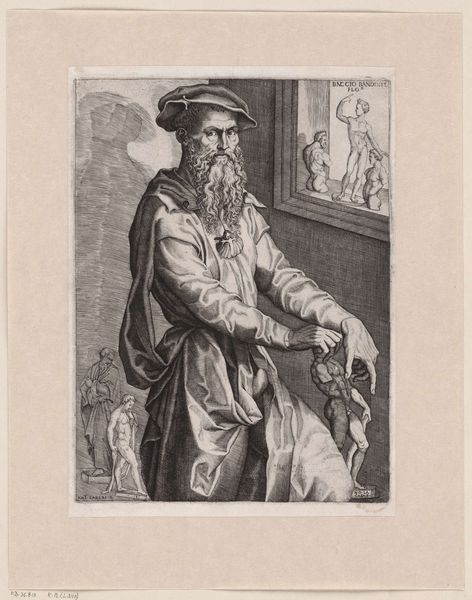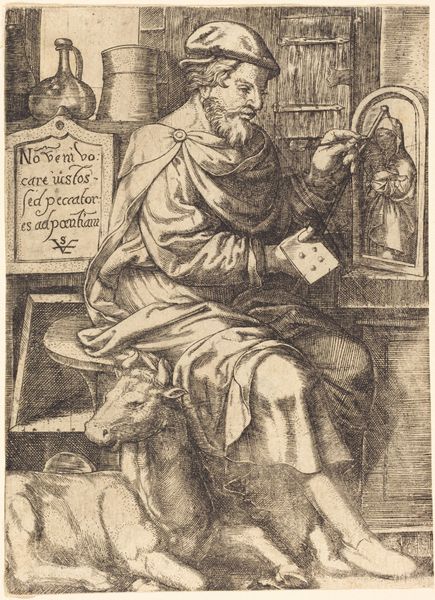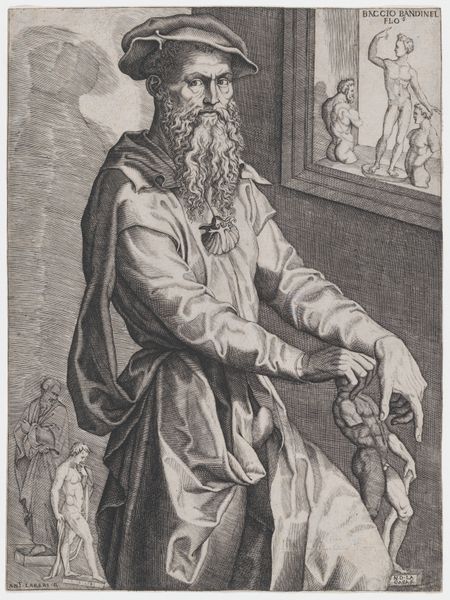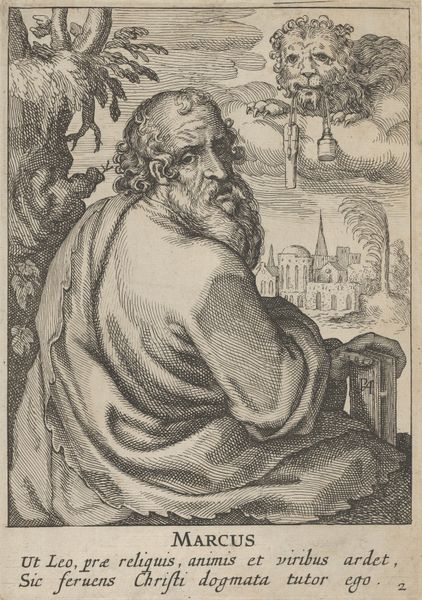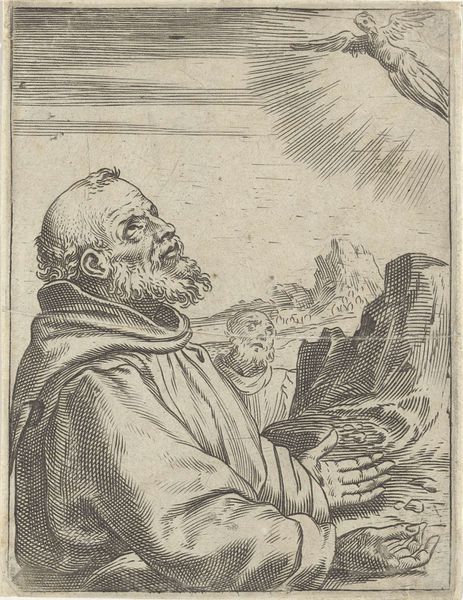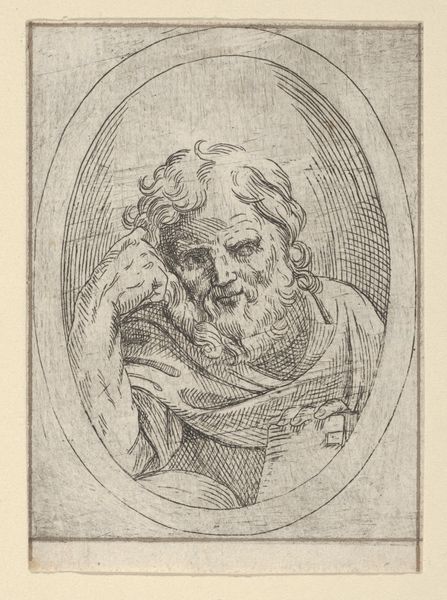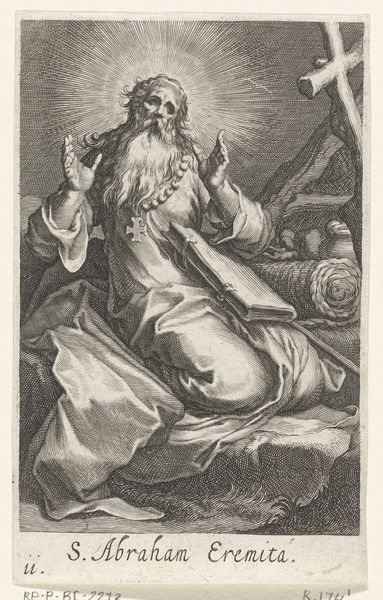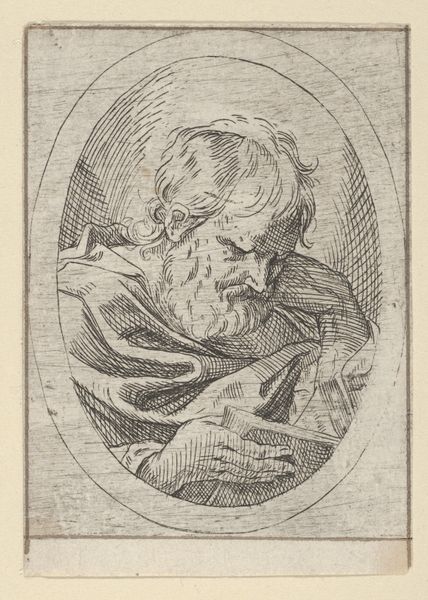
Zebulon, from "The Twelve Sons of Jacob" 1584 - 1594
0:00
0:00
Dimensions: Sheet: 6 3/16 × 4 5/16 in. (15.7 × 10.9 cm)
Copyright: Public Domain
Jacques de Gheyn II created this engraving of Zebulon, one of the twelve sons of Jacob, in the Netherlands at the turn of the seventeenth century. We see the figure of Zebulon in the foreground as a prosperous trader; behind him is a bustling port, full of ships and commercial activity. De Gheyn was working during the Dutch Golden Age when the Netherlands was at the center of a vast global trading network. How does the artist link Zebulon, a figure from the Old Testament, to the concerns of the Dutch Republic? The Latin inscription at the bottom tells us that Zebulon will fill Sidon’s ports and shores with merchandise and set sail for Tyre. In this image, De Gheyn associates the Dutch Republic’s commercial success with the biblical figure of Zebulon, thereby providing a religious justification for the nation’s maritime trade. As art historians, we use a range of source materials to better understand the social and institutional contexts that inform the artwork's meaning. Biblical and classical texts and the history of Dutch trade can offer insight into this engraving.
Comments
No comments
Be the first to comment and join the conversation on the ultimate creative platform.
